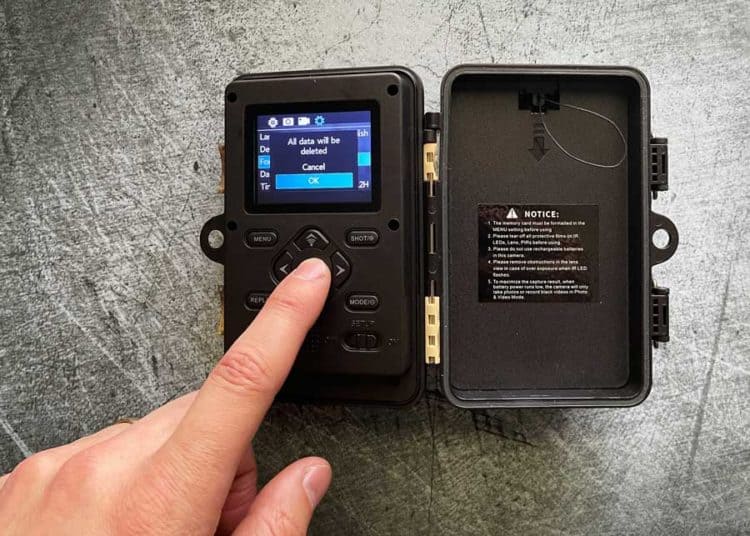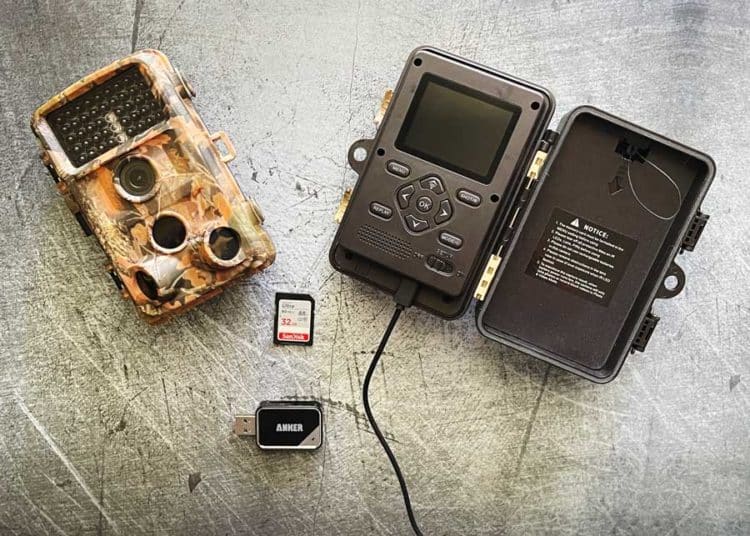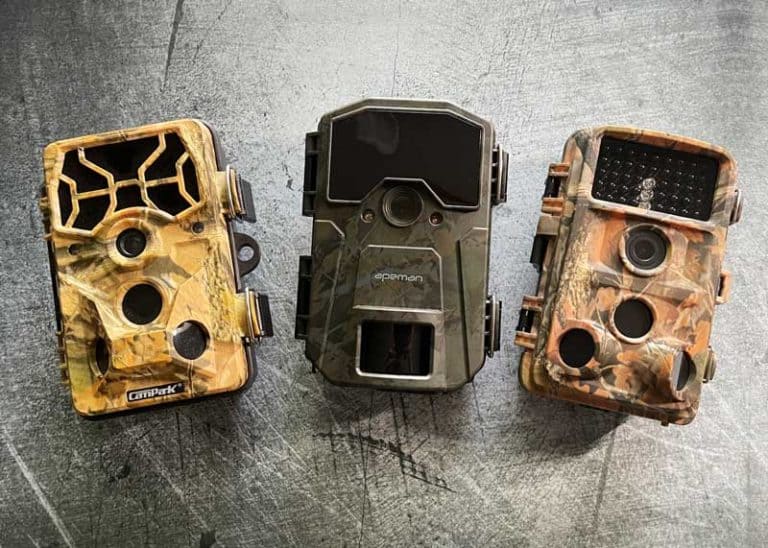Trail Camera Not Taking Night Photos? 7 Things to Check
Most trail cameras excel at night photos of local wildlife. But sometimes they fail and won’t take night photos. And sometimes they shoot photos but the night photos are all black. Here are some simple troubleshooting steps to get your camera working again.
Why is my trail camera not taking night pictures? The problem could be power (wrong or low battery), settings, camera features, SD card, or lack of features. These issues are easily fixed and take just a minute. If your trail camera lacks night vision, you’ll need a new camera for night photos.

Here are seven things to check if your trail camera isn’t taking night photos.
1. Detection Range
Trail cameras rely on detecting movement to take a photograph. The maximum distance that the camera is capable of detecting movement at is known as the detection range.
This can be adjusted on most cameras, though anything over 100 feet will make taking quality photos difficult. You might need a different detection range if your trail camera is not taking pictures at night.
And as with most photography, the closer your subject is to the camera, the better it will be.
Most of my trail cameras state a maximum range of 65 feet (20 meters).
2. Check the Power: 4 Options
Your first step is to confirm that you have the correct power source for your camera.
While it may seem obvious that any battery that fits your camera is suitable, that isn’t the case. Different types of batteries perform differently according to their manufacturing.
Here are the four power sources for trail cameras.
A. Alkaline Batteries
Alkaline batteries are often the cheapest and most readily available batteries. Perhaps when you first purchased your trail camera you snagged a pack at the checkout to get free shipping. But they may be the reason your trail camera is failing to take pictures at night.
The temperature falls at night in most regions. That can affect the performance of alkaline batteries as they run on a water-based electrolyte reaction. In cold temperatures, water can be compromised. This may be the culprit if your trail camera works during the day but not at night.
B. Rechargeable (NiMH) Batteries
Rechargeable batteries can be the most economical and environmental option, as they are a single-time purchase. But rechargeable batteries are not recommended for trail cameras because of their low voltage (1.2V vs 1.5V in alkaline batteries).
If your trail camera operates on rechargeable batteries, check to see that they are at full charge before setting up the camera for a cold night.
Rechargeable batteries are also not often rated for cold weather, which can be an issue in cooler areas and at night.
C. Lithium Batteries
Lithium batteries are the best option for ensuring reliable power to your trail camera at night. They are an expensive investment but tend to be the most reliable and high-powered.
If other types of batteries have not been working for you, consider switching to lithium batteries.
See our full guide to trail camera batteries for comparisons and tips for longer battery life.
D. Solar Powered
Solar-powered trail cameras are a great feature for filming in remote locations.
If your camera has solar panels, make sure that the panels can catch plenty of sunlight during the day.
This is often difficult for those who conceal their trail camera, so consider the placement of the camera if it has solar power capabilities.

3. Flash Range
The flash range is the distance from the camera to where the light of the flash can hit. Some light must interact with the subject to produce photographs.
Consult your owner’s manual to confirm that you have calibrated to the correct distance.

4. Low Flash Light
Like the camera itself, the flash will need optimal power to ensure the best possible performance. If you’ve already troubleshot the power source, then look into adjusting your settings.
- Black flash cameras (no-glow) may need some fine-tuning to catch photos in certain conditions.
- The infrared light of low-glow cameras uses visible light to take pictures. This feature is common on lower-cost trail cameras and is also known as PIR (passive infrared).
Here’s a great explanation of the difference between black flash and infrared trail cameras.

Do you know? Can deer see IR light?
5. Memory Card Full or Corrupted
This issue will be noticeable for daytime or nighttime pictures. If your trail camera has an SD card that has exhausted its storage capacity, it will not be able to take in new data.
Check and empty the SD card on your trail camera to ensure there is plenty of space to store new photos.
The easiest way to free up space is to format your SD card. Of course, you’ll want to upload all footage and photos first – formatting your card will permanently delete everything on it.
6. Not Rated for the Weather of Your Region
Not all trail cameras are created equal. Some models are ill-suited for freezing weather conditions. Others may not be able to cope with moisture or struggle in high-humidity environments.
Since temperatures dip at night, moisture in the air also increases. Morning dew collecting on your camera may be affecting its performance.
Double-check that it is rated for the conditions of your region.

Trail camera won’t turn on? Here are 9 things to try
7. Why Does My Trail Camera Take Black Pictures at Night?
If your camera is shooting photos that are coming out black, this could be one of two problems.
- Faulty IR Filter: If the filter is stuck in the daytime setting, then it won’t shoot night photos correctly. A stuck IR filter can cause night photos to be all black.
- Camera obstruction: It’s possible that something is in front of your camera but not your motion detector.
Trail cameras use a physical IR (infrared filter) that raises and lowers based on lighting conditions.
Here’s how your footage will be affected by a stuck IR filter.
- If the IR filter gets stuck up, you’ll get black photos at night.
- If the IR filter gets stuck down, you’ll get pink photos during the day.
It is unlikely that the failure is the flash bulb. Because the bulbs are LED, they last a very long time.
Why Isn’t My Trail Camera Not Taking Night Photos?
If your trail camera is still not taking photos at night, there may be a deeper underlying issue. Confirm that it has the capability to capture images in daylight by setting it up as standard.
Then, trigger it by walking into the field of view. If the camera operates as intended during daytime hours, it may need expert attention.
If it is a recent purchase, look into the warranty period with the manufacturer. They may be able to service the device, send replacement parts, or replace the unit.
If it is an older model, seek out photography repair shops in your area. Realistically, it will be less expensive to pick up a new camera than pay for the repair – especially on cameras under $200.
Here are our picks for the best trail cameras.
Troubleshooting Your Trail Camera
So, now you have six potential answers to the question, “why is my trail camera not taking night pictures?”
Trail cameras are relatively simple devices, with just a few common fail points.
Hopefully, this guide helped you resolve your problem. What worked for you to get your camera back to shooting night photos? I would love to hear your experience below!







